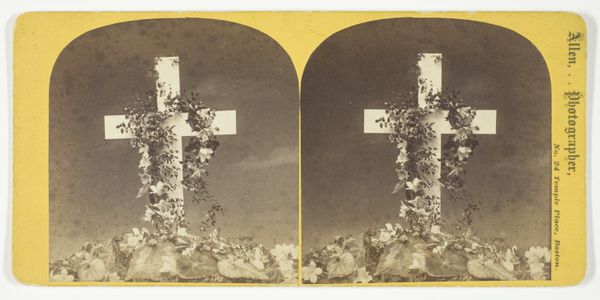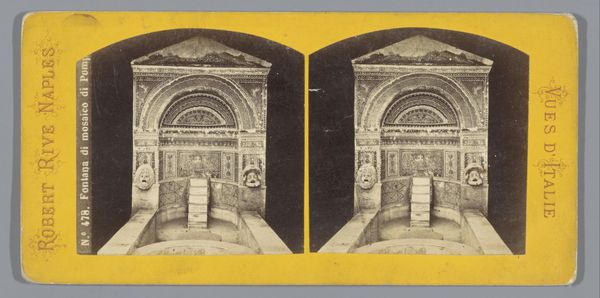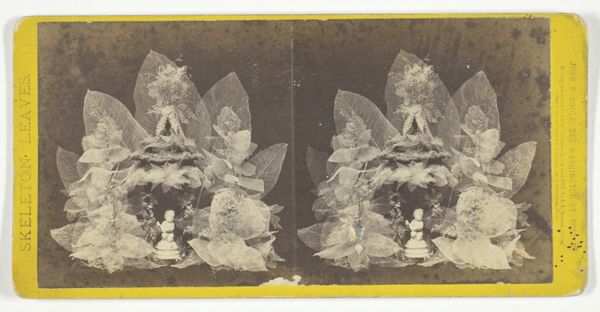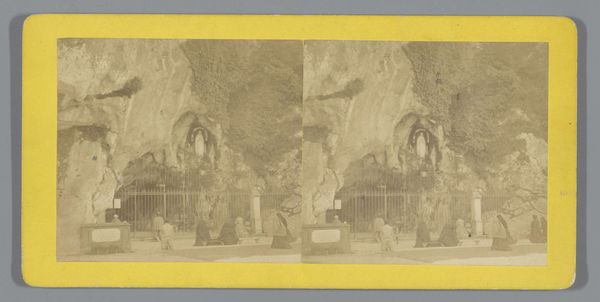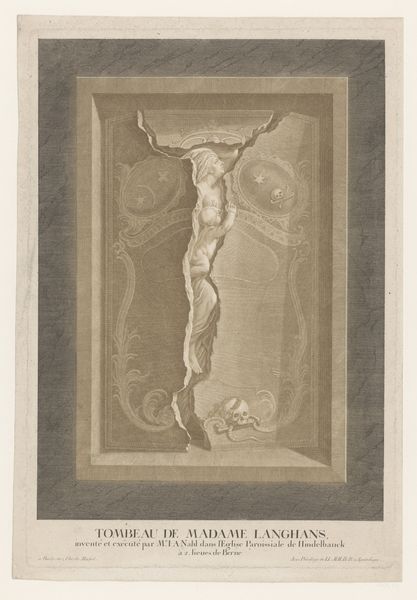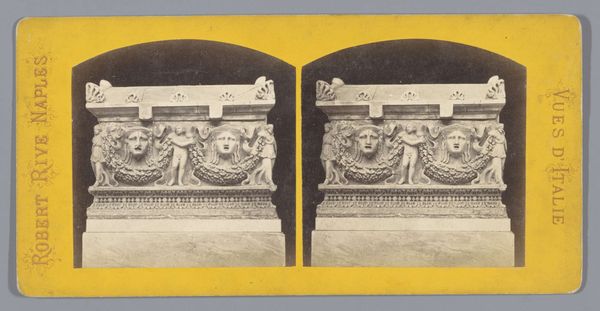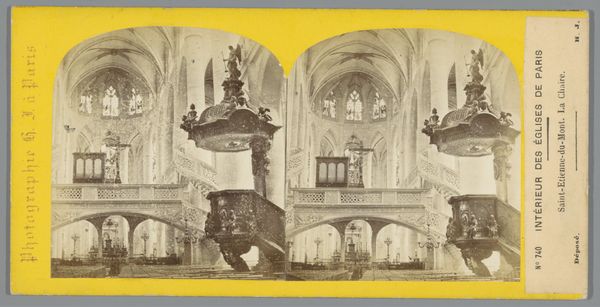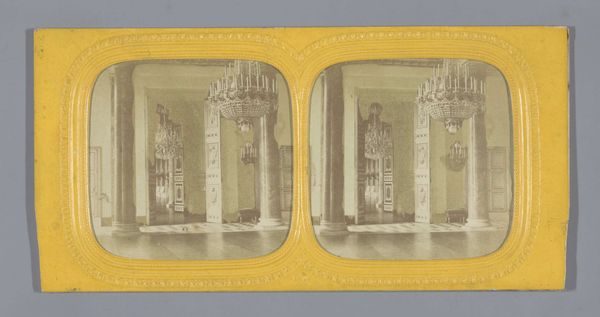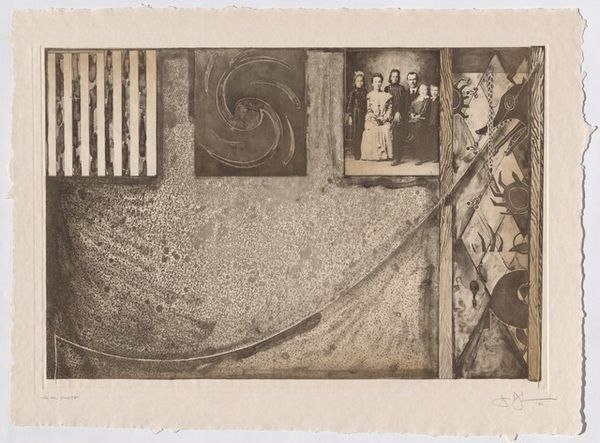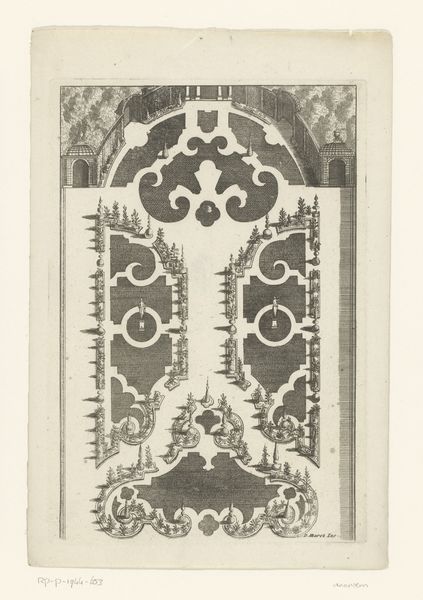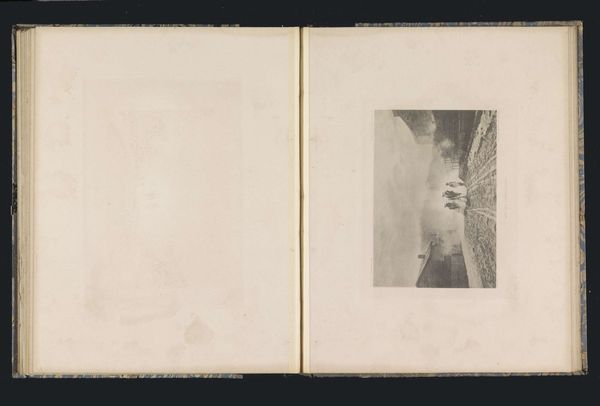
silver, print, photography
#
16_19th-century
#
silver
# print
#
photography
#
united-states
Dimensions: 7.4 × 6.9 cm (each image); 8.2 × 17.1 cm (card)
Copyright: Public Domain
Curator: Today, we're looking at a striking stereograph from the Art Institute of Chicago's collection. It’s called "Lincoln Memorial. Dissected Leaves.", and it was created in the 1860s by Anthony and Company. Editor: It's rather somber. Two nearly identical views of what appears to be a memorial cross inside a glass dome, stark against a vibrant yellow card. The delicate dissection of leaves evokes a sense of loss and preservation. Curator: Precisely. Stereographs were incredibly popular at the time, offering a sort of accessible 3D experience. But this particular image transcends simple entertainment. Think about the historical context, the 1860s: a nation grappling with civil war, deeply divided and mourning immense loss. This is, obviously, referencing Lincoln's death. Editor: Right. The image's materiality interests me. Silver print was so central to circulating these mourning objects. It speaks to the commercialization of grief, of memorializing trauma through mass-produced keepsakes, affordable mourning... It looks like fabric might be there as well, beneath the cross. Curator: Absolutely. The use of silver in photography had distinct class connotations, too, beyond its aesthetic value, signifying wealth and status at a time when class disparities fueled conflict and continue to resonate in a painful way in this period photograph. We might understand the photo not just as the documentation of one event or the expression of one sentiment, but how the materiality of death and loss have their own economic conditions. Editor: The act of preservation interests me—everything enclosed by glass. Is this protection or stifling? The artificial flowers made from leaves, pressed to appear permanent, become poignant, symbols of the fleeting nature of life. Curator: A poignant paradox, indeed. I believe its continued relevance speaks to broader cultural anxieties around mortality, how historical trauma continues to exist, the politics of commemoration and memory, all rendered so delicately within this single stereo card. Editor: The piece certainly provides a unique intersection to dissect those histories, indeed, using photography to examine ideas of mass culture. Curator: Agreed. This seemingly simple stereo card prompts us to consider layers of history, memory, and the material ways we engage with grief.
Comments
No comments
Be the first to comment and join the conversation on the ultimate creative platform.
